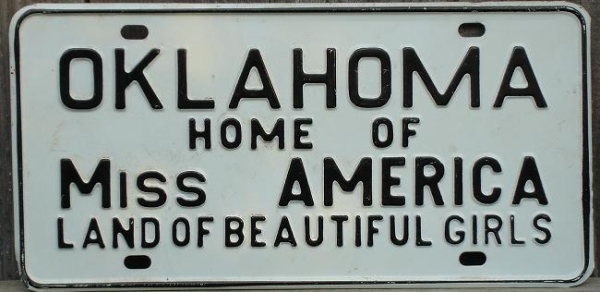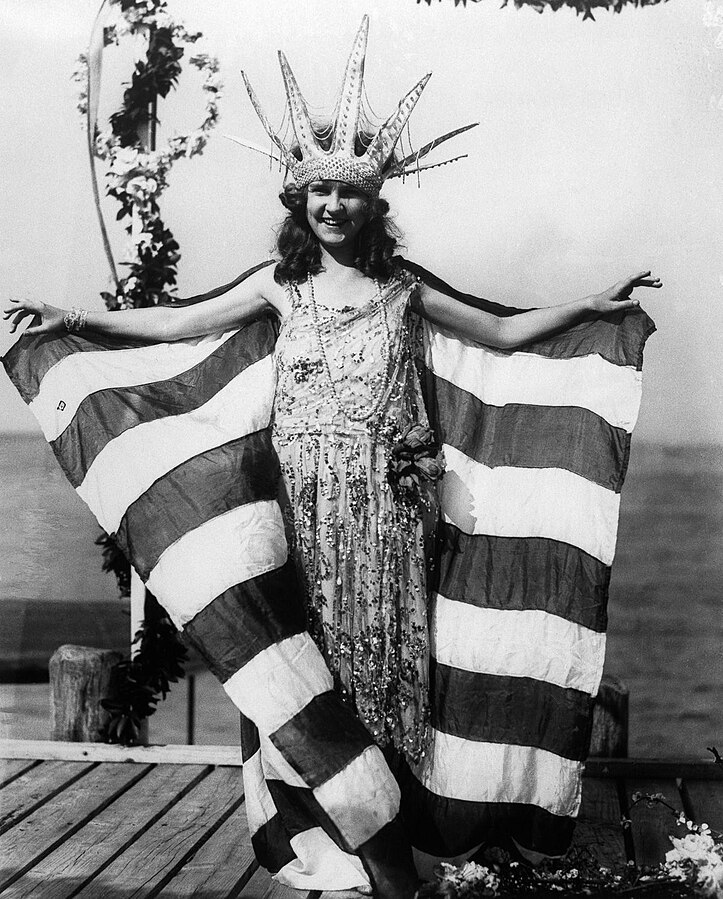Three or four years ago, amidst the muddled blur known as the pandemic, my family watched the 2000 film Miss Congeniality. It was about a police officer who goes undercover at a beauty pageant. It was hilarious…and dated. Really dated. It got me thinking. As awareness about body positivity and sexual harassment has risen over the past few years, how could society continue to condone this type of competition? To my limited knowledge, the idea of a contest with the purpose of choosing a woman based on looks, especially in this modern era, seemed dehumanizing.
I have since learned that the industry has changed. According to the Miss Universe pageant website, the pageant is supposed to “create and provide a safe space for women to share their stories and drive impact personally, professionally, and philanthropically.” Today, beauty pageants are supposed to be about more than just looks, but this change took a long time.
The History of Beauty Pageants
While the origins of this tradition can be traced back to ancient Greece, beauty contests as we know them today began with the American showman Phineas T. Barnum. Before he started a circus, he ran a museum, which he named after himself. Barnum’s American Museum included exhibits where animals, flowers, and even children were put on display and voted on by visitors. In 1854, he decided to expand to women, offering prizes for the winner, but this venture was unsuccessful. Women of this conservative era did not want to put themselves on public display.
However, Barnum decided to try again, this time with contestants mailing photos of themselves into the contest, rather than a live display. What was the prize? It was specially made portraits of the winners that would be featured in a book published in France. This idea was wildly successful and became increasingly popular. This contest was replicated by many people as it became recognized as a socially acceptable way for women to be judged on their physical features.
Soon, leaders hoping to increase morale or their region’s population caught on to this method. They began to hold beauty contests based on the submission of photos through the newspaper. Eventually, Americans became more comfortable with the idea of women publicly displaying themselves, and in the early 1900s, the first live beauty pageants were held.
The first Miss America pageant was held in September of 1921, in Atlantic City, New Jersey. Atlantic City had held a successful parade of young, beautiful women the year before, encouraging the Businessmen’s League to plan the next year’s pageant. They had local newspapers sponsor beauty contests from Pennsylvania to Washington D.C., and the winners were to compete in Atlantic City. The winner became the first Miss America.
Margret Gorman was the first Miss America. She was sixteen years old and chosen on the basis of her looks, which represented the type of woman upon which the “hope of the country rests.”
Over time, the pageant grew in popularity, and there was a strong emphasis placed on the wholesomeness of the participants’ character, done mostly in order to quell conservative complaints. As noted in a PBS article entitled Beauty Pageant Origins and Culture, “From the very beginning, the pageant was confronted with a conflict between the effort to present an image of innocence and virtue while, at the same time, promoting a spectacle where women paraded in public in bathing suits.”
According to PBS, as claims of the event’s immorality increased, the Miss America contest fizzled out. However, it was brought back to life in 1933, and by 1940, it had become a non-profit event including statewide pageants, interviews, and a scholarship program. Much of this was due to the efforts of Lenora Slaughter, who was hired in 1935 to legitimize the pageant, and make it “respectable.” Slaughter eventually became the pageant’s national executive director, working to create a positive image for Miss America.

Contestants in the Miss America Pageant are judged specifically on four categories: interview, talent, physical fitness, and evening wear. Monetary awards are given to the winner, runners up, and even the contestants who do not win.
In the years to come, similar contests were held in places such as schools and fairs. Soon other large scale pageants began to spring up. In 1951 the Miss World pageant was created. In 1952, when a contestant refused to wear a bathing suit in public, Catalina Swimsuits stopped sponsoring the Miss America pageant and instead created two new ones, known as Miss USA and Miss Universe.
These pageants still exist today, along with a multitude of smaller statewide pageants, pageants representing companies, pageants geared toward younger girls, and pageants for men and boys. This expansion of pageants into the mainstream begs the question: should we continue to hold beauty pageants in our modern society?
Beauty Pageants Are Going Too Far
Part of why my knee-jerk reaction to beauty pageants was so negative is that we often learn about the scandals. According to The New York Times, in 2022, contestants in the Miss USA pageant reported favoritism and harassment. The industry is already on unstable moral ground, and these allegations contribute to its negative image. And pageants seem to be all about image.
In the past, and even recently, the winners of pageants were selected because they represent the “ideal woman.” According to the article from PBS, at a state fair in 1926, the winner of a pageant was a girl who did not wear makeup or go out dancing or on dates. In other words, she represented her community’s ideals. While our society and ideals have changed, it still is not justifiable to decide that one person represents the “ideal” way to be.
This is a smaller scale version of what pageants like Miss Universe do. These pageants claim that they “can single out one person to represent an idealized vision of womanhood suitable for the entire world (or more grandly, the ‘universe’).” There is an element of conformity that is often associated with beauty pageants, the idea that one has to look a certain way in order to be beautiful.
To learn more, I spoke with my figure skating coach, Nathalie Borgella. She competed in pageants for six years starting in 2016, including the statewide pageant Miss NY USA, the winner of which would go on to compete in Miss USA, and, if victorious, Miss Universe. Borgella also competed in Miss Earth USA and Princess America, both national pageants.
Borgella informed me that the most difficult thing about competing in beauty pageants is having the right mindset. She stated that it’s “easy to start comparing yourself to others and suddenly thinking you’re ‘not good enough’ or that you need to be just like another contestant.” In beauty pageants, everyone competing is beautiful in their own way, but it can be hard to remember this when surrounded by a large number of conventionally attractive people.
Additionally, the beauty pageant has become so widespread that people of all ages enter— even children.
Entering children in beauty pageants can have a negative influence. A study at the University of Minnesota found that “childhood beauty pageant participation may influence adult body dissatisfaction, interpersonal distrust, and impulse dysregulation.”
Child pageants, such as the show Toddlers and Tiaras, center around young girls from two to four years old competing while wearing heavy makeup and adult costumes. According to US Weekly, “Most of the young girls featured on the TLC show wear fake hair, ‘flippers’ (fake teeth), heavy makeup and get professionally spray tanned.”
The fact that there are pageant divisions for all ages has sparked worldwide controversy. For example, a new law will soon be passed in France, banning child beauty pageants. Chantal Jouannao stated to The Week, “Don’t let us all allow our girls to believe from an early age that their only value is their looks.”
Pageants Are Teaching Important Skills
Borgella had a positive experience competing. She stated, “I honestly had a lot of fun preparing for each pageant and dressing up during pageant weekend. I loved all the glam, from the photo shoots for your headshot to walking across the stage in a sparkling gown.”
This dispels the misconception that beauty pageants are completely detrimental to participants. It is possible to have a good experience and benefit from it. Borgella said, “I also met a lot of other successful women at each pageant…I still keep in touch with some of these women today. It’s always important to grow your network and this was a fun way to do it.”
Borgella added that positive changes had been made to the industry. While there used to be an age limit to who could compete in Miss Universe, Miss USA, and the associated state pageants, this aspect of the competition has been eliminated. In doing so, the industry could start to discourage the belief that only young women are beautiful.
Additionally, contestants of different body types and with more unique hairstyles have begun to place higher and win in pageants. Borgella said, “I eventually stopped competing in long clip-ins that were so unnatural to me, and the year I made top 10 my hair was in a high bun which was more my style.”

(Photo Credit: Edwin Shaw; photo used by permission of Nathalie Borgella)
This validates the shift away from the idea that beauty is just one thing. The majority of people in the world do not look like the tall, skinny, young women who always seem to win, so to see this shift toward diversity is to see a shift in a more inclusive direction.
In addition, efforts have been made to create specialty pageants that are more inclusive or geared toward specific groups. Pageants such as Miss Plus America or Miss Amazing were created for women and girls of specific and underrepresented groups in the pageant industry. Miss Plus America is a pageant for teens and women with curvier body types. Miss Amazing is for girls and women who have disabilities. Both were created so that women and girls in these groups could feel beautiful and proud of who they are.
Pageants also offer opportunities to the winner. According to PBS, “The Miss America Organization’s main mission is to provide contestants with the opportunity to pursue their professional and educational goals through monetary grants and awards.” Miss America is given $40,000, the first, second, third, and forth runners up are given $30,000, $20,000, $15,000, and $10,000 respectively. The five semi-finalists are given $8,000 and even the contestants who do not win receive $3,000. Beyond that there are monetary prizes for winners of specific categories in the contest, such as swimsuit, interview, and talent.
Women and girls use this competition and its rewards to further their education and inspire others to do the same. They employ their titles to draw awareness to causes that they are passionate about, therefore spending the year calling for positive change. For example, the 2024 Miss America, Madison Marsh, is using her influence in order to advocate for research and awareness of pancreatic cancer. In addition, the program Beauties for a Cause, which is affiliated with Miss Earth, empowers female activists to make positive changes for the environment.
Beauty pageants have the potential to do so much good. They can be an opportunity for women and girls to grow, feel confident, and be comfortable in their own skin. A chance to gain resources to further their education and stand for a cause. But in order to truly do so, beauty pageants must move forward from the objectification and dehumanization of their origins. Our society has changed-they need to prove that they have changed alongside it.
As noted in a PBS article entitled ‘Beauty Pageant Origins and Culture,’ “From the very beginning, the pageant was confronted with a conflict between the effort to present an image of innocence and virtue while, at the same time, promoting a spectacle where women paraded in public in bathing suits.”

